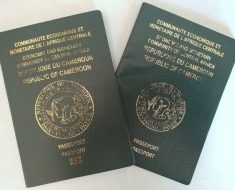40 Interesting Africa Facts

40 Interesting Africa Facts
- In ancient Egypt existed toilets and sewerage systems! One with the pharaohs built a city now often known as Amarna. An American urban planner noted that: “A great importance was placed on cleanliness in Amarna such as other Egyptian cities. Toilets and sewers were in use to dispose waste. Soap was created for washing the body. Perfumes and essences were their favorite for body odor. To keep the insect away from their homes they used natron. Amarna might as well be the very first planned ‘garden city’. ”
- Sudan has more pyramids than other country on earth – oddly enough, even more than Egypt. There are minimum 223 pyramids inside Sudanese cities of Al Kurru, Nuri, Gebel Barkal and Meroë. They are commonly 20 to 30 meters high and steep sided.
- The Sudanese city of Meroë is full of surviving monuments. Becoming the main city of the Kushite Empire involving 590 BC until AD 350, there are 84 pyramids in this particular city alone, many created with their own temple miniature. In addition, there are ruins of a bath house sharing affinities with those with the Romans. Its central feature is a large pool approached by way of a flight of steps using waterspouts decorated with lion heads.
- Bling culture really has a long and interesting history. Gold was used in order to decorate ancient Sudanese temples. One writer reported of which: “Recent excavations at Meroe and Mussawwarat es-Sufra revealed temples with walls and statues covered with gold leaf”.
- In around 300 BC, the Sudanese invented a writing script that had twenty-three letters which four were vowels and there is also a word divider. Hundreds of prehistoric texts have survived that have been in this script. Some are on display inside the British Museum.
- Within central Nigeria, West Africa’s most well-known civilization flourished between 1000 BC and 300 BC. Found in 1928, the early culture was called the Nok Civilization, named after the village that early artifacts were identified. Two modern scholars, announce that: “After calibration, the time scale of Nok art ranges from 1000 BC until finally 300 BC”. The site itself is much older going back as soon as 4580 or 4290 BC.
- West Africans imade stone by 1100 BC. In the Tichitt-Walata spot of Mauritania, archaeologists have found “large stone masonry villages” that date from the time of 1100 BC. The villages contain roughly circular compounds attached by “well-defined streets”.
Africa Facts
- By 250 BC, the foundations of Western side Africa’s oldest cities were established such as Old Djenné in Mali.
- Kumbi Saleh, the capital of Ancient Ghana, prospered from 300 to 1240 AD. Located in modern Mauritania, archaeological excavations found revealed houses, almost habitable these days, that of course need renovation and are some stores high. These houses had underground rooms, connecting halls and staircases and. Some even had nine rooms. One part of the city alone is estimated to have housed 30, 000 men and women.
- West Africa had walled towns and cities inside pre-colonial period. Winwood Reade, an English historian visited West Africa inside nineteenth century and left a comment that: “There are… thousands of big walled urban areas resembling those of Europe in the MIddle Ages, of the amazing early Greece.”
- An English official, Lord Lugard estimated that in 1904 were 170 walled towns. They are still accessible in the whole just the Kano land of northern Nigeria.
- Cheques are not as new as an invention as many of us believe. In the 10th century, an Arab geographer, Ibn Haukal, went to a fringe in Ancient Ghana’s region. In a writing in 951 AD, he told of a cheque for 42, 000 golden dinars written to some merchant in Audoghast by his or her partner in Sidjilmessa.
- Ibn Haukal, writing in 951 AD, tells us that the King of Ghana was “the richest king around the world” who’s pre-eminence was as a result of quantity of gold nuggets that were amassed by himself or by his predecessors.
- The Nigerian city regarding Ile-Ife was paved in 1000 AD around the orders of a woman ruler with decorations that originated from Ancient America. Naturally, no-one really wants to explain how this happened approximately 500 years ago from the time of Christopher Columbus!
- Glass windows existed during that time. The residence of the Ghanaian Emperor in 1116 AD was: “A well-built fort, thoroughly fortified, decorated inside with sculptures and images, and had glass house windows.”
- The Grand Mosque inside Malian city of Djenné, called “the largest adobe [clay] building in the entire world”, was first made in 1204 AD. It was built on a block plan where each area is 56 meters long. It has three large towers on one side, each with projecting wooden buttresses.
- One of many great achievements of the Yoruba was their city culture. “By the year 1300 AD,” says a modern day archeologist, “the Yoruba men and women built numerous walled metropolitan areas surrounded by farms”. These cities were Oyo, Owu, Ijesa, Ijebu , Ketu, Igbomina, Popo, Egbado, the sixteen Ekiti principalities, Sabe, Owo, Egba, Dassa and Ondo.
- Yoruba metal art within the mediaeval period was of world-class. An archeologist wrote that Yoruba art “would endure comparison with anything which often Classical Greece, and Rome Ancient Egypt, or Renaissance Europe could offer.”
- Inside the Malian city of Gao is the Mausoleum of Askia the fantastic, a weird 16th century edifice that resembles a step pyramid.

- Many mediaeval tumuli have already been found across the west of the African continent. Nearly 7, 000 have been discovered in north-west Senegal which were spread over nearly 1, 500 sites. They were probably constructed between 1000 and 1300 AD.
- Excavations at the Malian city of Gao performed by Cambridge University discovered glass windows. One of the windows was entitled: “Fragments of alabaster window surrounds and a piece of pink window glass, Gao10th– 14th century.”
- Africa Facts: In the year 1999, BBC developed a television series named Millennium. The program was devoted to the fourteenth century opens with all the following disclosure: “In the fourteenth century, the century with the scythe, natural disasters were a danger to civilizations extinction. THE Black Death kills a lot more people in Europe, Parts of Asia and North Africa when compared with any catastrophe has done before. Civilizations which avoid the plague thrive. In West Africa the Empire of Mali becomes the richest on the planet. ”
- Malian sailors had gone to America in 1311 AD, 181 years before Columbus. A great Egyptian scholar, Ibn Fadl Al-Umari, published for this sometime around 1342. Inside the tenth chapter of his book, there is a merchant account of two large maritime voyages ordered by predecessor of Mansa Musa, a king who inherited the Malian throne in 1312. This mariner king was not named by Al-Umari; however modern writers identify him as Mansa Abubakari II.
- A pilgrimage to Mecca in 1324 AD, a Malian leader, Mansa Musa, brought a great deal of money with him that his visit ended in the collapse of gold prices in Arabia and Egypt. It took twelve years for the economies of this region to come back to normal.
- West African gold mining happened on a massive scale. One modern writer stated that: “It is estimated that the total amount of gold mined in West Africa approximately 1500 was 3, 500 tons, worth more than $30 billion in today’s market.”
- The ancient Malian capital of Niani had a 14th century building called the Hall of Audience. The windows of the upper floor were plated using wood and framed in silver; those of the floor were plated using wood, framed in a rare metal.
- Mali in the 14th century was extremely urbanized. Sergio Domian, the Italian architectural and art scholar, who studied about this period of time said that: “Thus was laid the foundation of an urban civilization. With the height of its energy and power, Mali had at least 400 cities, and the inside of the Niger Delta was very densely populated”.
- One of the Malian cities called Timbuktu, had a 14th century population of 115, 000 people- 5 times bigger than mediaeval London. The Djinguerebere Mosque was biutl by Mansa Musa during the fourteenth century. 25, 000 students studied in the University Mosque for Oratory of Sidi Yayia. There have been over 150 Koran schools in which 20, 000 children have been educated. London, in the other hand, had a total of 20, 000 men and women in the 14th century population.
- National Geographic recently described Timbuktu to have been the Paris of the mediaeval time, because of their intellectual culture. According to the highly known Professor Henry Louis Entrances, 25, 000 university boys and girls studied there.

- Many old African families from the West have private selection and collections of books that go back to many centuries. Chinguetti and Oudane which are cities of the Mauritanian, possess a total of 3, 450 give written mediaeval books. There could be another 6, 000 books still surviving inside other cities of Walata. Some date to the time of the 8th century. There are 11, 000 textbooks in some libraries in Niger. Finally, in Timbuktu, Mali, you can find about 700, 000 books that have survived since ancient ages.
- A bunch of 1600 books was considered a smaller library for a West African scholar in the early 16th century. Professor Ahmed Baba regarding Timbuktu is recorded as saying that he had the smallest library of any one his friends – only 1600 books.
- Relating to these old manuscripts, Jordan Palin, in his TV series Sahara, said that the imam of Timbuktu “has an amount of scientific texts that definitely show the planets circle around the sun. They date back centuries… Its convincing evidence which the scholars of Timbuktu knew greater than their ‘colleagues’ in the European countries. In the fifteenth century in Timbuktu the mathematicians knew about the rotation of the planets, they also knew about the details of the eclipse, they knew things which we’d to wait for 100 or 200 years to know in Europe when Galileo and Copernicus invented these same calculations and got in very big troubles and were given a very hard time for it.”
- The Songhai Empire in the 16th century in the Western part of the African continent had a government position called Minister for Etiquette and Protocol.
- Africa Facts: The mediaeval Nigerian location of Benin was designed to “a scale comparable with the Great Wall of China”. There was undoubtedly a big organization regarding defensive walling, in total 10, 000 miles. Even before China, The wall of Benin was in the Guinness Book of Records in the 1974th edition that described this metropolis as: “The largest earthworks on the planet made in the mechanical era.”
- In around 300 BC, the Sudanese invented a writing script that had twenty-three letters which four were vowels and there is also a word divider. Hundreds of prehistoric texts have survived that have been in this script. Some are on display inside the British Museum.
- Within central Nigeria, West Africa’s most well-known civilization flourished between 1000 BC and 300 BC. Found in 1928, the early culture was called the Nok Civilization, named after the village that early artifacts were identified. Two modern scholars, announce that: “After calibration, the time scale of Nok art ranges from 1000 BC until finally 300 BC”. The site itself is much older going back as soon as 4580 or 4290 BC.














